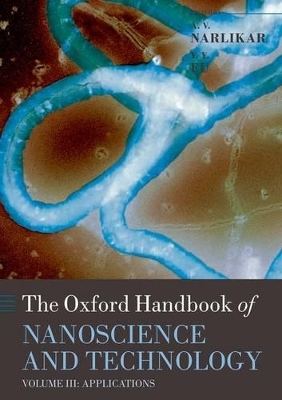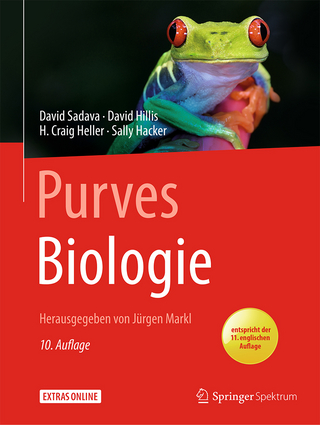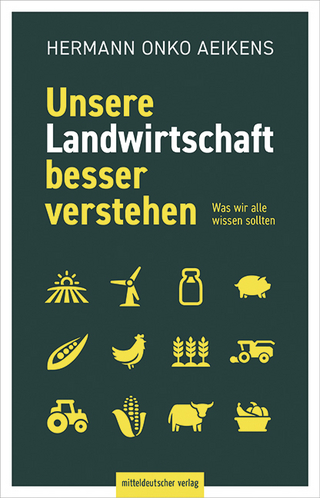
Oxford Handbook of Nanoscience and Technology
Oxford University Press (Verlag)
978-0-19-953306-0 (ISBN)
This is an agenda-setting and high-profile book that presents an authoritative and cutting-edge analysis of nanoscience and technology. The Oxford Handbook of Nanoscience and Technology provides a comprehensive and accessible overview of the major achievements in different aspects of this field. The Handbook comprises 3 volumes, structured thematically, with 25 chapters each. Volume I presents fundamental issues of basic physics, chemistry, biochemistry, tribology etc. of nanomaterials. Volume II focuses on the progress made with host of nanomaterials including DNA and protein based nanostructures. Volume III highlights engineering and related developments, with a focus on frontal application areas. All chapters are written by noted international experts in the field. The book should be useful for final year undergraduates specializing in the field. It should prove indispensable to graduate students, and serious researchers from academic and industrial sectors working in the field of Nanoscience and Technology from different disciplines including Physics, Chemistry, Biochemistry, Biotechnology, Medicine, Materials Science, Metallurgy, Ceramics, Information Technology as well as Electrical, Electronic and Computational Engineering.
Dr A.V. Narlikar took his Ph.D. in superconductivity at Cambridge University. He has worked in the field of superconductivity and nanostructures for more than 45 years. He is a Fellow of the Indian Academy of Sciences, National Academy of Sciences (India) and Indian National Science Academy. He has held many visiting appointments at various international universities and previously for many years he served as the Director Grade Scientist at the National Physical Laboratory, New Delhi, India. ience ersity. He received his Ph.D. in Materials Science and Engineering from Shanghai Jiao Tong University (SJTU) in 1998, and then worked as a postdoctoral research fellow at University of Science and Technology Beijing, and Peking University. He has been JSPS Research Fellow at Tohoku University in Japan and a visiting scholar at the Hong Kong University of Science & Technology.
1. Role of Computatioanal Sciences in Si-Nano Technologies and Devices ; 2. Few-Electron Quantum Dot Spintronics ; 3. Spintronics with Metallic Nanowires ; 4. Molecular Nanomagnets: Towards Molecular Spintronics ; 5. Si/SiGe Heterostructures in Nanoelectronics ; 6. Quantum Dots: Self-Organized and Self-Limiting Assembly ; 7. Intersublevel Quantum-Dot Infrared Photodetectors ; 8. Nanoionics and its Device Applications ; 9. Molecular Electronics Based on Self-Assembled Monolayers ; 10. Self-Assembly Strategy of Nanomanufacturing of Hybrid Devices ; 11. Templated Carbon Nanotubes and the Use of their Cavities for Nanomaterial Synthesis ; 12. Nanocatalysis ; 13. Bi-Functional Nanomaterials for the Imaging and Treatment of Cancer ; 14. Nanoparticles in Medicine ; 15. Nanostructured Probes to Enhance Optical and Vibrational Spectroscopic Imaging for Biomedical Applications ; 16. Protein Based Nano-Devices ; 17. Bioconjugated Quantum Dots for Tumor Molecular Imaging and Profiling ; 18. Modulation Design of Plasmonics for Diagnostic and Drug Screening ; 19. Carbon Nanotube Field Emission Electron and X-Ray Technology for Medical Research and Clinical Applications ; 20. Theory of Hydrogen Storage in Nanoscale Materials ; 21. Electron Cold Sources: Nanotechnology Contribution to Field Emitters ; 22. Free-Standing Grid-Like Nanostructures Assembled into 3-D Open Architectures for Photovoltaic Devices ; 23. Nanolithography Using Molecular Films and Processing ; 24. Laser Applications in Nanotechnology ; 25. Evaluating the Risks Associated with Nanomaterials
| Reihe/Serie | Oxford Handbooks in Physics | The Oxford Handbook of Nanoscience and Technology ; Vol.3 |
|---|---|
| Zusatzinfo | 450 b/w illustrations |
| Verlagsort | Oxford |
| Sprache | englisch |
| Maße | 196 x 252 mm |
| Gewicht | 2216 g |
| Themenwelt | Naturwissenschaften ► Biologie |
| Naturwissenschaften ► Chemie | |
| Naturwissenschaften ► Physik / Astronomie | |
| Technik ► Maschinenbau | |
| ISBN-10 | 0-19-953306-7 / 0199533067 |
| ISBN-13 | 978-0-19-953306-0 / 9780199533060 |
| Zustand | Neuware |
| Haben Sie eine Frage zum Produkt? |
aus dem Bereich


